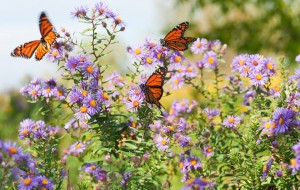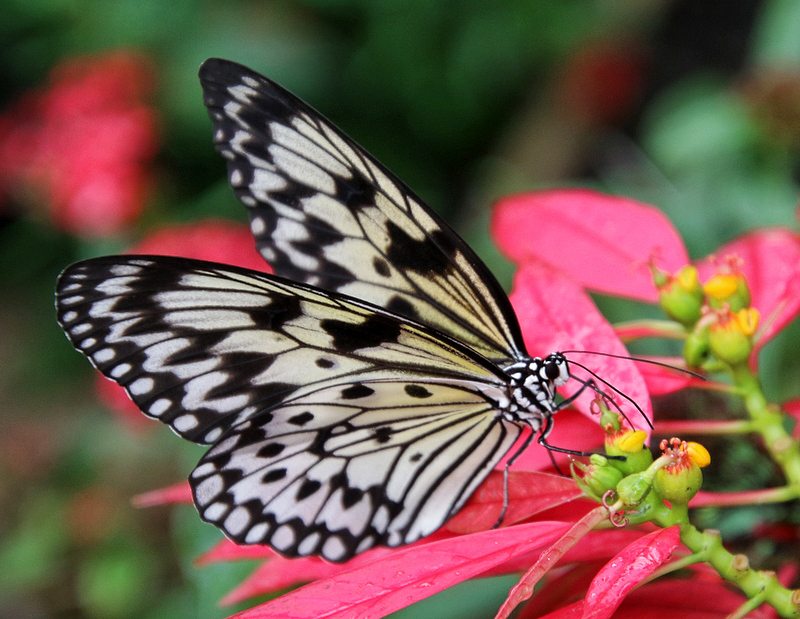Brighten Up Your Backyard with a Butterfly Garden: Three Easy Steps
By Carmen and Tripp Eldridge
Are you ready to spruce-up your backyard? If you’re looking for something cost-effective and worth the time and energy, a butterfly garden is a great option. With a butterfly garden, you’re not only adding a charming and colorful flair to your space, you are also making a meaningful impact on your slice of nature by providing a sanctuary to butterflies and pollinators, like bees and hummingbirds. Additionally, if you have kids, a butterfly garden is a great way to educate them about the ecosystem of pollenating plants, native South Florida butterflies and honeybees, and how all these species depend on one another. More importantly, this garden will also help your family spend a little less time staring at your phones and more time checking out all the species of plants and animals enjoying the space you created together.

You may think that a butterfly garden is something you can only do with a live caterpillar kit, but actually, if you design your garden well, butterflies will come to you on their own. With some thoughtful planning and consistent maintenance, you’ll have Monarchs and Zebra Longwings keeping you company in no time.
Here are three simple steps to get your butterfly garden up and running:
Step 1: Select Your Space
Before you purchase anything, you should consider the space where you plan to create your garden. Having the right elements is more important than the size of your garden as there are a few things butterflies need throughout their life span. Butterflies need a sunny area — that also has shelter from the wind, such as trees and shrubs. However, you will need to make sure you have enough space for at least several different plants to grow. Butterflies can get most of their liquid from nectar, so they don’t need birdbaths or ponds. However, they do need access to a moist patch of mud or soil in order to get the critical minerals that butterflies require. As a bonus, if you place a few flat rocks in your garden, they’ll also have a spot to rest and enjoy the sun — so they’ll definitely never want to leave!
Step 2: Purchase Your Plants
Butterflies need two different kinds of plants: host plants and nectar plants. Host plants are for caterpillars to use for food before becoming butterflies. Nectar plants provide nutrients to adult butterflies. It’s important you have both: not only do you want plants that will attract adult butterflies, you also want the plants that will encourage them to stay, lay eggs, and create a new generation of butterflies.
As you shop for your garden plants, look for ones labeled “butterfly friendly.” These flowering plants will be the food for adult butterflies. To select host plants, you may need to do some research on what works best for the butterflies you want to attract. For example, Milkweed works very well for monarch butterfly larvae. It’s important to choose plants native to your geographic area. Thankfully, Florida is home to some of the best native plants for butterflies!

Steps 3: Maintain the Space
The first thing after you’ve set up your butterfly garden is, truly, to wait. If you’ve created the right space, the butterflies will come to you. Check regularly to make sure the plants are watered, have enough sunlight and have no weeds nearby. Ensure that there are no pesticides sprayed in the area (butterflies are insects, after all), so the butterflies have a nontoxic environment to live in. Now that you’ve done the legwork — you get to enjoy the results. And with many butterfly species being endangered, you’ll get the added sense of satisfaction knowing that your butterfly garden helps preserve these beautiful winged creatures.
We hope you enjoy your butterfly garden as we do ours! Feel free to check out the butterfly garden we recently created at our community – Arden – if you’d like some ideas to get started.
About the authors
Carmen and Tripp Eldridge are small-scale farming experts and the current Farm Directors at Arden, an award-winning residential agrihood in Palm Beach County, FL. Managing the community’s five-acre farm, Tripp and Carmen are pioneering innovative farm-to-table living in South Florida.

